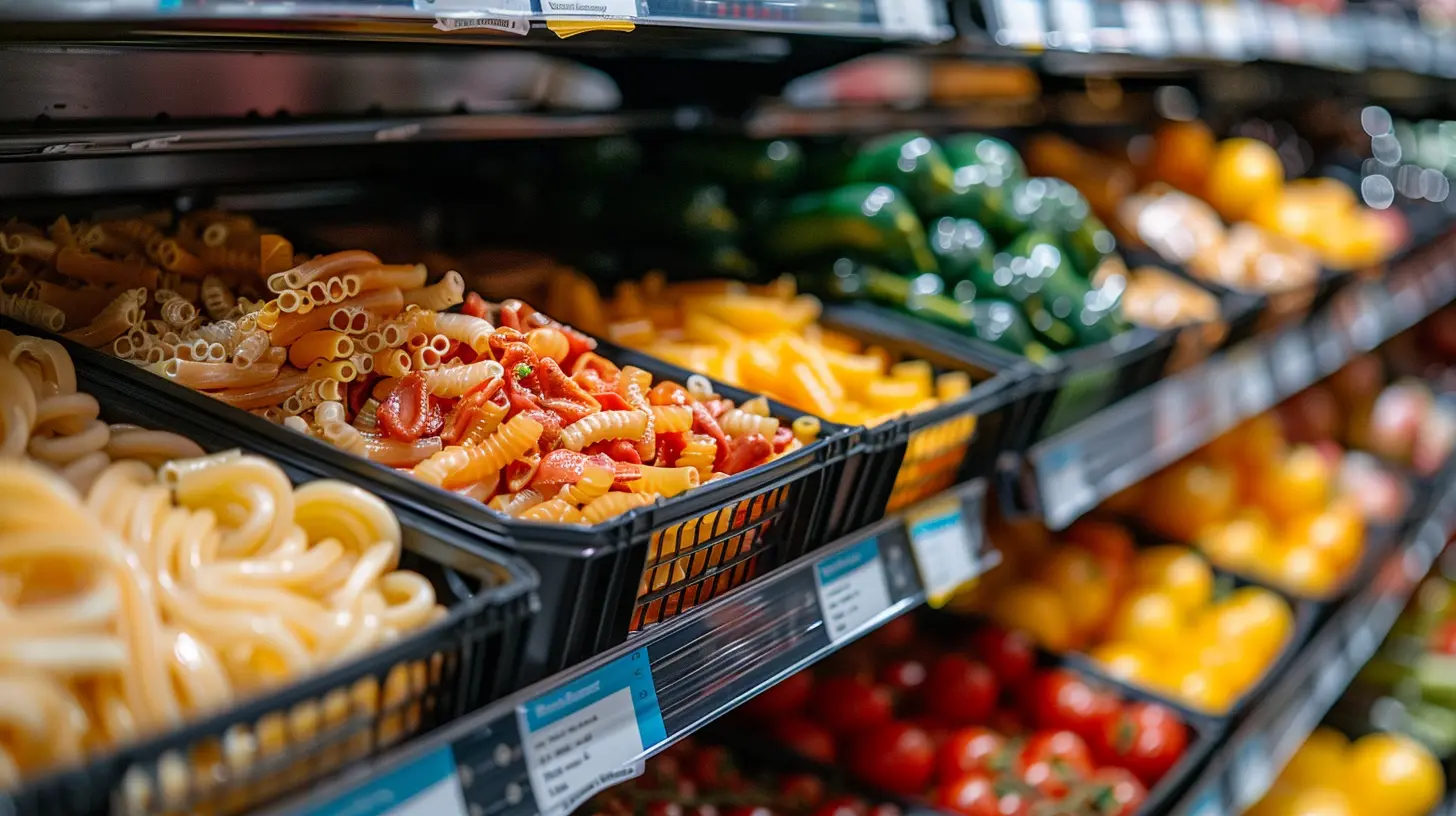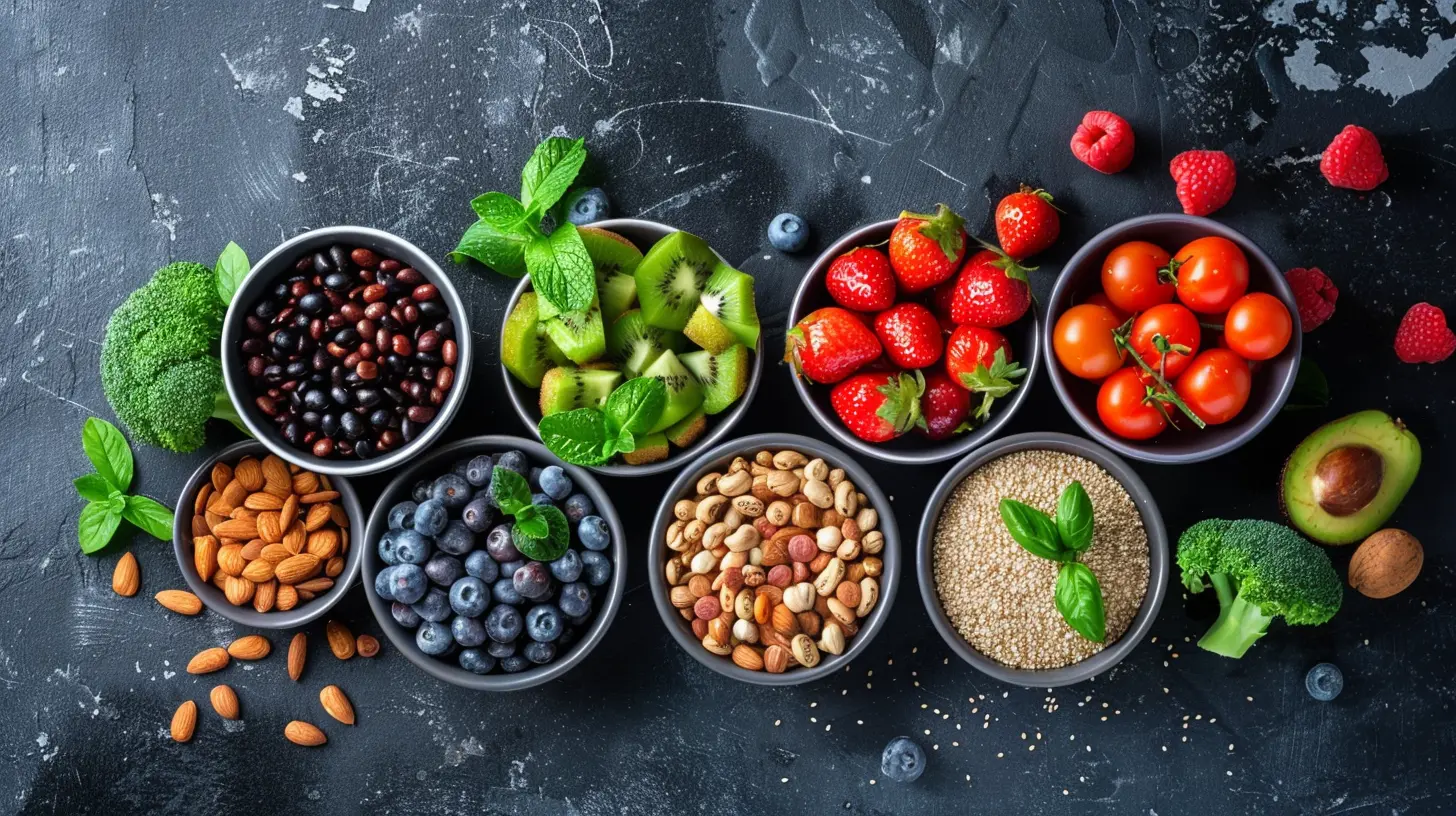How to Read Nutrition Labels Like a Pro
8 November 2025
Ever found yourself staring at a nutrition label, feeling more confused than ever? You're not alone! Understanding food labels can feel like deciphering a secret code. But don’t worry—I’ve got your back. Once you get the hang of it, you’ll be able to make healthier choices with confidence.
This guide will break it all down for you, step by step, in a way that actually makes sense. Ready? Let’s dive in. 
Why Nutrition Labels Matter
Nutrition labels aren’t just random numbers slapped onto packages. They’re a powerful tool to help you make informed choices about what you eat. Whether you're trying to lose weight, maintain a balanced diet, or just avoid hidden sugars, reading labels is a skill worth honing.Understanding these labels can:
- Help you control portion sizes
- Assist in managing your daily calorie intake
- Identify sneaky ingredients that might not be good for you
- Compare products to find the healthiest option
Now, let's break down each section of a nutrition label, so you can decode it like a pro. 
1. Serving Size: The Hidden Catch
The first thing you should always check is the serving size. Why? Because everything else on the label (calories, fats, sugars, etc.) is based on this number.Manufacturers sometimes make serving sizes unrealistically small to make the product look healthier. Ever noticed how a bag of chips might claim to have only 150 calories? But when you check, that's just for 10 chips—who eats just 10 chips?
Pro tip: Always multiply the values by the number of servings you actually eat. If a serving is one cup and you eat two, double all the numbers on the label. 
2. Calories: Not Just a Number
Calories measure how much energy a food provides. While calorie counting isn’t everything, knowing them helps you balance energy in versus energy out.- Low-calorie: 40 calories or less per serving
- Moderate-calorie: Around 100 calories per serving
- High-calorie: 400+ calories per serving
Calories aren’t bad—they fuel our bodies! But be mindful of where they come from. A 200-calorie serving of almonds is way more nutritious than a 200-calorie soda. 
3. The Fats: Good vs. Bad
Fat has a bad reputation, but not all fats are harmful. Here’s what you need to know:- Healthy Fats (Good Guys)
- Unsaturated fats (found in nuts, seeds, avocados, olive oil)
- Omega-3s (from fish, flaxseeds, and walnuts)
- These fats support brain function and heart health.
- Unhealthy Fats (Bad Guys)
- Saturated fats (can raise bad cholesterol, found in fatty meats and processed foods)
- Trans fats (found in some fried and packaged goods—these should be avoided at all costs!)
Pro tip: Look for products with 0g trans fats, but also check the ingredients list. If you see "partially hydrogenated oils," that means trans fats are lurking in there. Sneaky, right?
4. Carbohydrates: The Sugar Trap
Carbs are essential, but not all carbs are created equal.- Good Carbs: Whole grains, fruits, and veggies, which provide fiber and nutrients.
- Bad Carbs: Refined grains and added sugars, which spike blood sugar levels.
The Sugar Scam
Manufacturers love to sneak sugar into things—sometimes under different names! Check the ingredients list for:- High fructose corn syrup
- Cane sugar
- Maltose
- Dextrose
- Fruit juice concentrate
Pro tip: The American Heart Association recommends keeping added sugar intake under 25g per day for women and 36g for men. If a product contains over 10g of added sugar per serving, think twice!
5. Fiber: Your Best Friend
Fiber is a game-changer for digestion and overall health. It helps regulate blood sugar, keeps you full longer, and supports gut health.- Aim for at least 25g of fiber per day.
- Look for products with 3g or more per serving for a good fiber boost.
Whole foods like beans, whole grains, fruits, and veggies naturally have a good amount of fiber. If a packaged food boasts of being “high in fiber,” check that it’s coming from natural sources rather than additives.
6. Protein: The Building Block
Protein is essential for muscle repair, immune function, and overall health.- A good protein source should have at least 5g per serving.
- Lean meats, eggs, dairy, beans, and nuts are excellent natural sources.
- Beware of highly processed protein bars with tons of added sugar and artificial ingredients.
7. Sodium: The Silent Killer
Most processed foods contain a shocking amount of sodium, which can lead to high blood pressure and other health issues.- Daily sodium intake should be under 2,300mg, ideally around 1,500mg for most adults.
- If a single serving contains 500mg+ sodium, it’s on the higher side.
- Check ingredients for “sodium” in disguise, like monosodium glutamate (MSG), baking soda, and sodium nitrate.
Pro tip: If a product has 20% or more of the Daily Value (DV) for sodium, it’s considered high.
8. Ingredients List: Where the Truth Lies
If you read nothing else, read this section! Ingredients are listed in order of quantity—so if sugar is the second or third ingredient, that means the product contains a lot of it.Things to Watch For:
✅ Short ingredient lists (fewer than 5 ingredients is a good sign).✅ Whole, recognizable ingredients (like oats, nuts, or vegetables).
❌ Artificial colors, artificial flavors, preservatives.
❌ Sugar by any name (corn syrup, fructose, sucrose, etc.).
If the list reads like a chemistry experiment, it’s probably not great for you.
9. The Percent Daily Value (%DV): What Does It Mean?
Ever seen those percentages next to nutrients and wondered what they mean? They show how much a nutrient in one serving contributes to your daily needs, based on a 2,000-calorie diet.- 5% DV or less → Low in that nutrient
- 20% DV or more → High in that nutrient
For example, if a food has 25% DV of calcium, that means you're getting 25% of your daily calcium needs in just one serving. Aim for high %DV in fiber, vitamins, and minerals, but low %DV in added sugars, sodium, and unhealthy fats.
Final Thoughts: Becoming a Pro at Reading Labels
Reading nutrition labels doesn’t have to be overwhelming. Start by checking the serving size, then move on to calories, fats, sugars, and ingredients. The more you practice, the quicker and easier it’ll become.Food companies try to trick us with clever marketing, but knowledge is power. Now that you know how to read nutrition labels like a pro, you can make smarter, healthier choices—without falling for their sneaky tricks.
So, next time you grab a snack, turn it around, read the label, and ask yourself: Is this really what I want to put in my body?
### Your Health, Your Choice. Stay Informed!
all images in this post were generated using AI tools
Category:
NutritionAuthor:

Eileen Wood
Discussion
rate this article
1 comments
Sarina Underwood
Great article! I’ve always found nutrition labels a bit overwhelming, but this guide makes it seem much more approachable. I'm eager to learn about those hidden ingredients and understand serving sizes better. It’s fascinating how much insight is packed into those labels—can’t wait to apply these tips to my shopping!
November 13, 2025 at 4:19 AM


